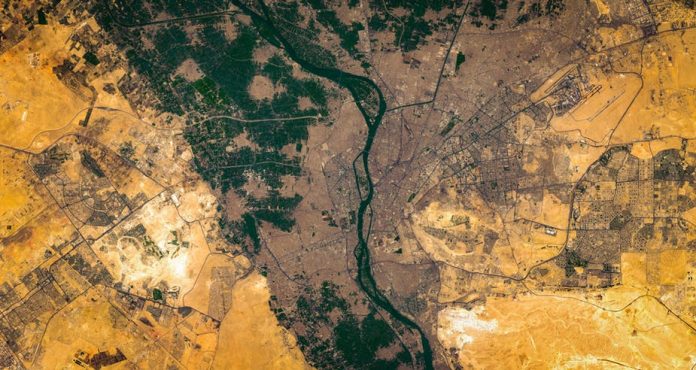By Ethan D. Coffel & Justin S. Mankin
The Nile – the world’s longest river – runs through 11 countries in Africa and has a basin that covers about 3 million sq kms, nearly 10% of the continent’s landmass. About 250 million people are reliant on the Nile’s waters in Ethiopia, Uganda, South Sudan, Sudan and Egypt.
Nearly all of the rainfall that feeds the Nile’s two major tributaries – the Blue and White Nile – falls in the upper Nile basin, found in South Sudan, western Ethiopia and Uganda. The lower Nile basin receives very little rainfall and the countries there – Sudan and Egypt – depend heavily on the Nile for water.
Climate projections suggest that, by the end of the century, the amount of rain in the Upper Nile basin could increase by up to 20%. But our new paper shows that, despite more rainfall, devastating hot and dry spells are projected to become more frequent in the Upper Nile basin.
These conditions will occur simultaneously with the region’s rapid population growth, anticipated to double by the middle of this century. This will increase water stress in the region, irrespective of the modest rainfall increases.
At present, around 10% of the basin’s population faces chronic water scarcity due to the region’s seasonal aridity and the highly unequal distribution of water resources. By 2040, according to our research – in a year with average temperatures and rain – the number of people facing water scarcity could reach 35%. That’s more than 80 million people without enough water to function in their daily lives.
Hot and dry conditions will make this worse. These conditions will kill crops, reduce hydropower, diminish the water available for people and industry and heighten tensions over the distribution of regional water resources. By 2040, a hot and dry year could push over 45% of the people in the Nile Basin – nearly 110 million people – into water scarcity.
Even without these developments, population growth would drive water scarcity in the Upper Nile. But larger deficits in the amount of water flowing into streams and rivers during future hot and dry years will amplify this effect. This will leave an additional 5% to 15% of the future population in the Upper Nile basin facing water scarcity in hot and dry years. Read more…



